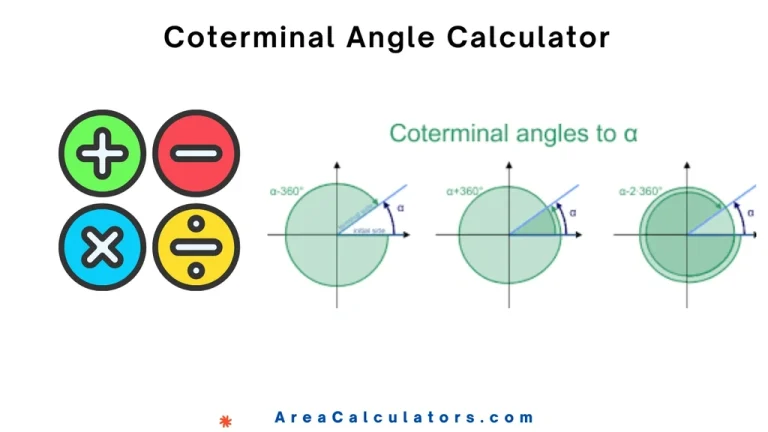Average Treatment Effect Calculator
To calculate the average treatment effect (ATE), subtract the mean outcome of the control group from the mean outcome of the treatment group. This provides the overall effect of the treatment on the population.
To calculate the average treatment effect (ATE), subtract the mean outcome of the control group from the mean outcome of the treatment group. This provides the overall effect of the treatment on the population.
The Average Treatment Effect Calculator is used to measure the causal impact of a treatment or intervention. It compares the average outcomes between two groups: one that received the treatment (treatment group) and one that did not (control group).
The ATE is widely used in fields like healthcare, economics, and social sciences to assess the effectiveness of interventions. This calculator simplifies the process by calculating the difference in outcomes between the two groups, providing a clear estimate of the treatment’s impact.
| Variable | Description |
|---|---|
| ATE | Average Treatment Effect |
| M_t | Mean outcome for the treatment group |
| M_c | Mean outcome for the control group |
Example 1:
| Step | Calculation |
|---|---|
| Mean Outcome for Treatment Group (M_t) | 75 |
| Mean Outcome for Control Group (M_c) | 65 |
| ATE Calculation | 75−65 |
| Result | 10 |
Answer: The average treatment effect is 10.
Example 2:
| Step | Calculation |
|---|---|
| Mean Outcome for Treatment Group (M_t) | 90 |
| Mean Outcome for Control Group (M_c) | 80 |
| ATE Calculation | 90−80 |
| Result | 10 |
Answer: The average treatment effect is 10.
The Average Treatment Effect (ATE) Calculator helps estimate the causal effect of a treatment or intervention in an experimental or observational study. The ATE measures the difference in outcomes between the treated and untreated groups, indicating the effectiveness of the treatment.
To calculate Average Treatment Effect on the Treated (ATT), the formula is similar but focuses only on those who actually received the treatment:
ATT = E(Y1 | T=1) – E(Y0 | T=1).
Tools like the average treatment effect calculator in Excel allow for easy input of data to calculate ATE or ATT in real-world scenarios. For more complex models, statistical software like R can be used to calculate the ATT or ATE using functions designed for causal inference.
Understanding the ATE vs ATT difference is important. ATE refers to the overall population, while ATT focuses specifically on the treated population. Additionally, tools for calculating local average treatment effect (LATE) or conditional average treatment effect (CATE) offer more detailed insights into specific subgroups.
In summary, these calculations are crucial in fields like medicine, economics, and social sciences, where determining the true impact of a treatment or intervention is essential.
To determine Time-Weighted Average (TWA) noise exposure, start by calculating the noise dose (D) using measured sound levels and exposure times. Then, use the TWA formula to estimate the average noise level over an 8-hour workday. The TWA (Noise Exposure) Calculator helps assess the average noise levels workers are exposed to during an 8-hour work…

To find the cholesterol index (CI), divide the total cholesterol (TC) by HDL and add the quotient of triglycerides (TG) divided by 5. This formula provides a clear indicator of overall cholesterol health. The cholesterol index calculator works wonderfully when it comes to the evaluation of health of heart. It assists in calculating a person’s…

To find coterminal angles, add or subtract 360° from the given angle for positive and negative coterminal angles, respectively. The Coterminal Angle Calculator enables you to identify angles that share the same terminal side, differing only by full rotations (360° in degrees). Coterminal angles are useful in trigonometry for simplifying angle measures in calculations. By…

To calculate the area of a trapezoid, add the lengths of the two parallel sides (a and b), divide the result by 2, and then multiply by the height (h). This will give you the total area of the trapezoid. Trapezoid Area Calculator Units: InchesMillimetersCentimetersDecimetersMetersKilometersFeetYardsMiles Base 1: Base 2: Height: Calculate Reset Trapezoid Area: The…

To determine the chargeable weight, compare the volumetric weight (VW) and actual weight (AW). The greater of the two is the chargeable weight (CW) used for billing purposes. A Chargeable Weight Calculator helps determine the weight used to calculate shipping costs, especially in air freight and courier services. The chargeable weight is calculated by comparing…

To convert laps to miles, multiply the number of laps by the track length, then divide by 1609.34. The Laps to Miles Calculator comes to the rescue for the runners, swimmers, and athletes who are looking to convert the number of laps completed on a track or pool to miles. This conversion is helpful for…